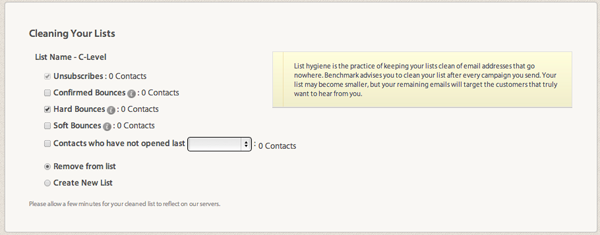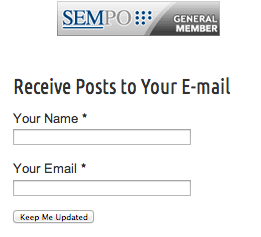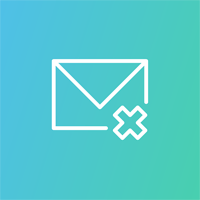10 Habits of Highly Effective Email Marketers

:: Asher Elran, Dynamic Search ::
If you have established and are growing a strong contact database, email marketing can be a good way to keep in touch with them. It is a quick, direct, low-cost method of communication. Since email has become such an integral part of the way people communicate today it is often an effective way to reach out to your contacts.
Unfortunately, spammers have abused this method of communication to the point that many people are very difficult to reach, even for legitimate reasons. Advancements in email clients and spam blockers are doing great job of eliminating the obvious spam, but the damage has been done. As a result, it can be difficult at times to get the desired response from potential customers.
Developing an email campaign has its rules, tricks, and even a few simple things that may be overlooked. Without keeping these tactics in mind, even the best email marketing campaigns can experience decreases in performance.
To make sure that your email marketing is as effective as possible, here are 10 habits developed by highly effective email marketers.
1. Clean Up Your Database
If you have been in business for a while it is possible that you have developed an extensive contact list through your website or other sales and marketing efforts. Rather than setting these to the side, take the time to go through this list and clean it up. Make sure that you have enough current information to be able to communicate effectively and clean out any obsolete information.
Cleaning your list means that you need to consider removing the following contacts from your database:
- Contact(s) whose emails have bounced back
- Contact(s) who didn't show up in your last 10 opening reports
- Contacts who have chosen to manually opt-out (no question about that)
- Contact(s) whose mail box is full or they were "out of the office" for more than five runs

2. Use Your Website to Let Visitors Opt-In
Sending an unsolicited email may not be the most effective way to communicate your message. Your campaign will be far more effective if you use a mechanism to let people opt-in to your email list. These are people who have expressed enough interest in your company that they will provide you with their email address and allow you to send them information.
There are a number of effective opt-in techniques:
- An opt-in button on relevant pages of your site
- An opt-in button on forms on your site
- A link to opt-in on your outbound emails
- An opt-in link on confirmations and receipts that you send out
- A giveaway on your website
- Facebook opt-in app (available with most email marketing services)
- Product registration / service opt-in
- Offer send using PPC
- Various offline methods
You can also use your social media efforts to allow people to opt-in to your emails. You can use updates to remind followers that your latest newsletter or other information is about to go out, and you can generate interest by giving a small taste of what will be included. These responses can then be used to help grow your marketing communication database.

3. Organize Contacts
Unless you sell a single item to a single demographic, it is likely that your customers have a wide range of interests and backgrounds. Dividing your contacts into distinct groups allows you to target specific email messages to people who are much more likely to truly be interested in them. If you are sending out a generic message to an indeterminate list, it will likely result in a low response rate.
Here are the groups that I have in my email list, therefore I can personalize messages and be more relevant:
- Website opt-in to blog and/or newsletter
- LinkedIn opt-in connections
- Requested a free analysis report opt-in
- Free give away opt-in
- Facebook opt-in
4. Target Campaigns
Once the contact list is segmented, it is possible to target specific campaigns or offers to the people that are most likely to respond. Generic emails that list a variety of information and offers are usually not even read by the recipients. People are busy and they won't take the time to do much more than scan. They generally won't expend the effort to dig through the haystack looking for the needle.
Instead, it is better to send one or two specific bits of information that are targeted towards a particular customer segment. If it is easy for the recipients to see to see that you have taken the time to tailor an offer specifically for them, you are more likely to get a positive response.
Segmentation is not only for the groups of contacts that you have built. This tactic can also be used to create subgroups, such as:
- CEOs
- Geographic location
- Age range
- Interest groups
- And more
5. Keep it Simple
It can be tempting to go overboard on the design of the email template in order to catch the attention of the recipient. However, as with many things in marketing, simple is best. Don't have so much flash and glitz, as this can distract from the message.
Another thing to keep in mind is that many people are checking email on their mobile devices. These don't have the same screen size or resolution as a desktop computer, and some won't display images without extra action. Many people won't use the data bandwidth on their mobile devices to download and view advertising pictures, so more text than images is generally a good idea. If you have something further that they need to see, you can include a link to your website for more information.
A cluttered email usually causes the CTR (click through rate) to decrease. Try to keep your emails short with only one CTA (call to action).
6. Have Great Copy
Since marketing is the purpose of the email, realize that the copy needs to grab attention quickly and draw the reader in. Great copy is essential. If you or your marketing team are having trouble creating great email marketing copy, there are a number of resources to help you. These include how-to blogs and copywriting services. Without good copy, results are bound to be weak, so this is one place to invest some time and money to make sure that you get it right.
In addition to well-written content, you need to include a clear and concise call to action (CTA). Don't leave readers wondering what the next step is. Tell them exactly what you want them to do, and make it easy for them to do it.
7. Create a Powerful Subject Line
Closely related to good copy is an excellent subject line. A weak or obscure subject line may be viewed as spam, either by the email client or the recipient. If the email client sorts it as spam, the message may end up in the Junk Mail folder or even deleted. If the recipient concludes that it may be spam, they may delete it without even opening it.
This can't be overstated. With the rise in spam and computer viruses, we have been trained not to open emails from senders who we don't recognize or with subject lines that sound fishy. Make sure that you give a clear enough indication of the purpose of the email in the subject line to warrant further investigation, and then be sure to follow it up with great copy, as mentioned above.
8. Pick a Good Email Marketing Provider
One of the best ways to help your email marketing efforts may be to choose the right email marketing provider. In addition to sending the emails, they can also help in a variety of other ways. They can provide help in setting up and tracking the effectiveness of your campaigns. They can help to develop segments and targeted marketing, and maybe even make recommendations to improve copy.
They will also make sure that you abide by the CAN SPAM Act and follow other best practices. Many offer other features, such as A/B testing that can help you improve the reach and effectiveness of your efforts. Take the time to shop and compare to find the best fit for your needs.
9. Track
Make sure to measure the success and ROI of your email marketing in concrete numbers. It is important to know a variety of factors in order to properly measure effectiveness. Many email marketing providers will offer a dashboard or reporting to measure such things as:
- How many messages were delivered (and which were undeliverable)
- How many were opened
- The click through rate (CTR)
- The conversion rate
Only with clear and accurate statistics at your fingertips will you be able to measure your effectiveness and then work to improve your results.
10. Refine Your Efforts
There is no single effective way to run an email marketing campaign that will work for all customers of every business. The only way to see what works best for your needs is to constantly measure and refine your campaign.
If you are accurately measuring, you can see where there are weak spots. For example, if many messages aren't being delivered, you need to spend more time cleaning up the database. If messages just aren't being opened, maybe the subject lines need to be worked on to have more impact. If your click through rate isn't what is expected, it could be because of weak copy or an unclear call to action. Each of these metrics will provide a clue as to what improvements can be made.
Once improvement opportunities have been identified, you can experiment with different combinations of elements to see what works the best. Which subject lines work with which copy? Is there a particular call to action and landing page combination that leads to more conversions? The most important habit of an effective email marketer is to strive for constant improvement and greater success.
Author Bio:
 Asher Elran is the founder and CEO at Dynamic Search™ – a Web-marketing firm.
Asher Elran is the founder and CEO at Dynamic Search™ – a Web-marketing firm.









